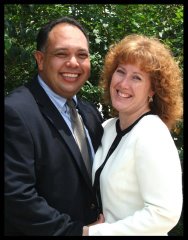Clarion Books, 2003
ISBN 0-395-77608-2
Summary:
Jim Murphy paints a vivid portrait of epidemic-ridden 18th-century Philadelphia using excerpts from journals, newspaper articles, medical records, public records, church records, and personal letters.
Critical Analysis:
After reading the juvenile book An American Plague, I cannot think of any reason I would ever want to read an adult informational book about the yellow fever epidemic of 1793 unless I decide to attend medical school in the future. Jim Murphy's thirteen pages of sources for yellow fever research attest to the detail with which he researched his 165-page book. Murphy pulls from personal and public documents as diverse as newspaper articles, journals, church records, and 18th-century medical books. His research even lead him to visit Mutter Museum for Infectious Diseases, supported by the College of Physicians of Philadelphia, a group whose predecessors battled the fever and fought over possible cures and causes.
Besides presenting an enormous amount of information about the epidemic and societal attitudes of the times, Murphy manages to make the account read more like a novel than a typical non-fiction book. In the opening of chapter two, Murphy writes
"It was clear that thirty-three-year-old Catherine LeMaigre was dying, and dying horribly and painfully. Between agonized gasps and groans she muttered that her stomach felt as if it were burning up. Every ten minutes or so her moaning would stop abruptly and she would vomit a foul black bile."
With an introduction like that, who wouldn't be tempted to continue reading?
Where possible, Murphy lets the witnesses' words speak for themselves. When groups of physicians square off against each other defending their respective "cures" for yellow fever, Murphy does not need to point out the intensity of the rivalry. Instead, he lets Dr. Adam Kuhn's own words express the depth of his dislike for Dr. Benjamin Rush: "He, I say, is a scourge more fatal to the human kind than the plague itself would be."
Throughout the book, readers see the impact the fever had on the city, everyday residents, and both local and national leaders. Along with the victims, readers are also introduced to heroes from the expected (College of Physicians) to the unknown (Free African Society).
In addition to engaging, information-rich text, Murphy includes line drawings, maps, and engravings to help tell the story. Interestingly, hardly any art exists from the actual epidemic in Philadelphia, although the author is able to use related historical images to give readers an idea of what life during those times would have been like.
Lest anyone think history might not relate to modern life, the last chapter of the book explains how the U.S. is currently poised for another yellow fever epidemic. Since we have not been able to eradicate the mosquitoes that spread the disease, we have not manufactured the vaccine in years, and there is still no cure for yellow fever, we may be more connected to those souls in Philadelphia than we realize.
Review Excerpts:
"History, science, politics, and public health come together in this dramatic account of the disastrous yellow fever epidemic that hit the nation's capital more than 200 years ago. Drawing on firsthand accounts, medical and non-medical, Murphy re-creates the fear and panic in the infected city, the social conditions that caused the disease to spread, and the arguments about causes and cures. With archival prints, photos, contemporary newspaper facsimiles that include lists of the dead, and full, chatty source notes, he tells of those who fled and those who stayed--among them, the heroic group of free blacks who nursed the ill and were later vilified for their work."
Review Excerpts:
"History, science, politics, and public health come together in this dramatic account of the disastrous yellow fever epidemic that hit the nation's capital more than 200 years ago. Drawing on firsthand accounts, medical and non-medical, Murphy re-creates the fear and panic in the infected city, the social conditions that caused the disease to spread, and the arguments about causes and cures. With archival prints, photos, contemporary newspaper facsimiles that include lists of the dead, and full, chatty source notes, he tells of those who fled and those who stayed--among them, the heroic group of free blacks who nursed the ill and were later vilified for their work."
Hazel Rochman, BookList, June 1, 2003
"Murphy injects the events with immediacy through his profiles of key players, such as local doctors who engaged in fierce debates as to the cause, treatment and nature of the "unmerciful enemy"—among them the famous Benjamin Rush. The text documents many acts of heroism, including the Free African Society's contributions of food, medicine and home care: the Society was rewarded afterwards only with injustice. Archival photographs and facsimiles of documents bring the story to life, and a list of further reading points those interested in learning more in the right direction. This comprehensive history of the outbreak and its aftermath lays out the disputes within the medical community and, as there is still no cure, offers a cautionary note."
Publishers Weekly, March 10, 2003
Connections:
- A Newbery Honor Book; National Book Award finalist; The Robert F. Sibert Medal winner
- Read An American Plague as a companion to the historical novel Fever 1793 by Laurie Halse Anderson, possibly alternating a chapter of the novel with a chapter of the informational book.
- Research other plagues in history and how they affected society.
- Research the Free African Society of Philadelphia.
- Access the web sites for the Centers for Disease Control or the World Health Organization to find out what current epidemics are affecting the globe and what precautions they advise.
